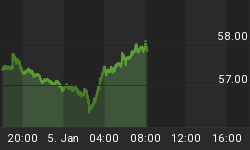Sometimes, as folks get older, they repeat themselves. That's what I'm doing this week. Because Social Security reform is now a front-burner issue, I'm retrieving from the archives a piece I wrote on the subject back on September 7, 2001. And it goes a little something like this ...
Dipping into the trust fund. Privatization. These hotly debated topics are related to the periphery of the Social Security issue. The real Social Security issue, as discussed by Tom Redburn in the Sunday, September 2, 2001 edition of The New York Times ("No Easy Fix For Social Security"), is how in 2030 two workers will be able to support themselves and one retiree. Today, the ratio is 3.4 workers per retiree.
To better understand the real Social Security issue, consider a world with no formal social security system. This, of course, is not so hard to imagine for some current retirees because in their youth, that is before 1935, there was no US social security system. Assume that every family is made up of two parents and four children. For the sake of argument, the parents are all the same age and the children are too (but obviously younger than the parents are). All the mothers took fertility pills, the result of which was quadruplets for every family. (This means that when the parents retire, there will be two workers to support each retiree.) What I'm getting at is that we have a nation made of "clone" families. Because of this, income, wealth, intelligence and all other attributes are equally distributed. Assume that all parents save through their working years via purchases of newly-issued non-dividend paying corporate equities. The corporations use the proceeds from equity sales to purchase capital equipment. In this make-believe world, all parents will meet their Maker at the same time and that time was known to all parents when they began working. With this knowledge, all parents saved an amount that would provide them with the financial resources until they deceased equal to, say, 70%, of their income in the year prior to their retirement.
Under these circumstances, could there be a social security "issue"? After all, the parents saved for their retirement. So, it is not a case of the government having to issue debt or raise taxes to pay retirement benefits. Nevertheless, there still could be a social security issue depending on how productive the quadruplets turned out to be. To understand this, consider how the retired parents will obtain the funds to purchase goods and services. They will transfer their stock certificates to the quads. In return, the quads will give Mom and Pop an annual stipend equal to 70% of Mom's and Pop's combined annual income just prior to their retirement. In effect, Mom and Pop purchase an annuity from the quads, giving up the stock in exchange. Where will the quads get the money to pay their parents' stipend? By spending less of their income, that is, by transferring some of their income to Mom and Pop. The quads will have married and started families of their own. So, not only are the quads producing goods and services for themselves and their parents, but for their children, too. But here's the potential rub. What if, through no fault of their own, the quads' income is such that by the time they give Mom and Pop their stipend, the quads' left-over income means no growth in their standard of living? In other words, what if the quads' productivity, even with the additional capital stock provided them via Mom's and Pop's saving, is not high enough to guarantee them a rising standard of living after having taken care of Mom and Pop in their golden years? This is the real Social Security issue -- the possibility of not enough real goods and services being produced to guarantee a rise in per capita real income.
Now, in my stylized example, the parents have done everything right to reduce the probabilities of real social security problem occurring. In fact, with the kind of perfect knowledge that I have assumed to exist in the example, the parents might know exactly how much capital they needed to equip their children with, that is, they might know how much they needed to save, in order to enable their children to be productive enough to enjoy a rising standard of living, even after taking care of Mom and Pop. Sadly, in the real world, we parents have not done everything right. As I showed in a previous commentary ("The New Economy - The Myth vs. The Reality," June 28, 2001), although the capital-to-labor ratio has grown faster in recent years, its growth rate has not been anywhere near exceptional in the context of the post-World War II experience. Corroborating evidence of this is that productivity growth, when compared on a cycle-peak to cycle-peak basis, also was not exceptional in the most recent cycle. (See my August 31 commentary, "Labor Dazed by Greenspan".) As important, the increase in the capital-to-labor ratio that has occurred was not due to our -- that is, the nation's -- saving, but rather the saving of foreign entities. This represented by highest current account balance we are carrying in the past 40 years -- 4.50% of nominal GDP. So, not only are our children stuck with having to take care of us in our dotage -- assuming they remember the Fifth Commandment -- but also the foreign parents who have been financing our capital investment.
To the degree that marginal tax rate cuts and paying down US government debt leads to increased private saving and investment, then we are starting to address the real Social Security issue. But I suspect it is too little, too late. So let me warn you, Dee and Bond, (my kitties), Marisa and Matt (my kiddies) may be vying with you over the Sea Captain's Choice Whiskas in the not too distant future.















